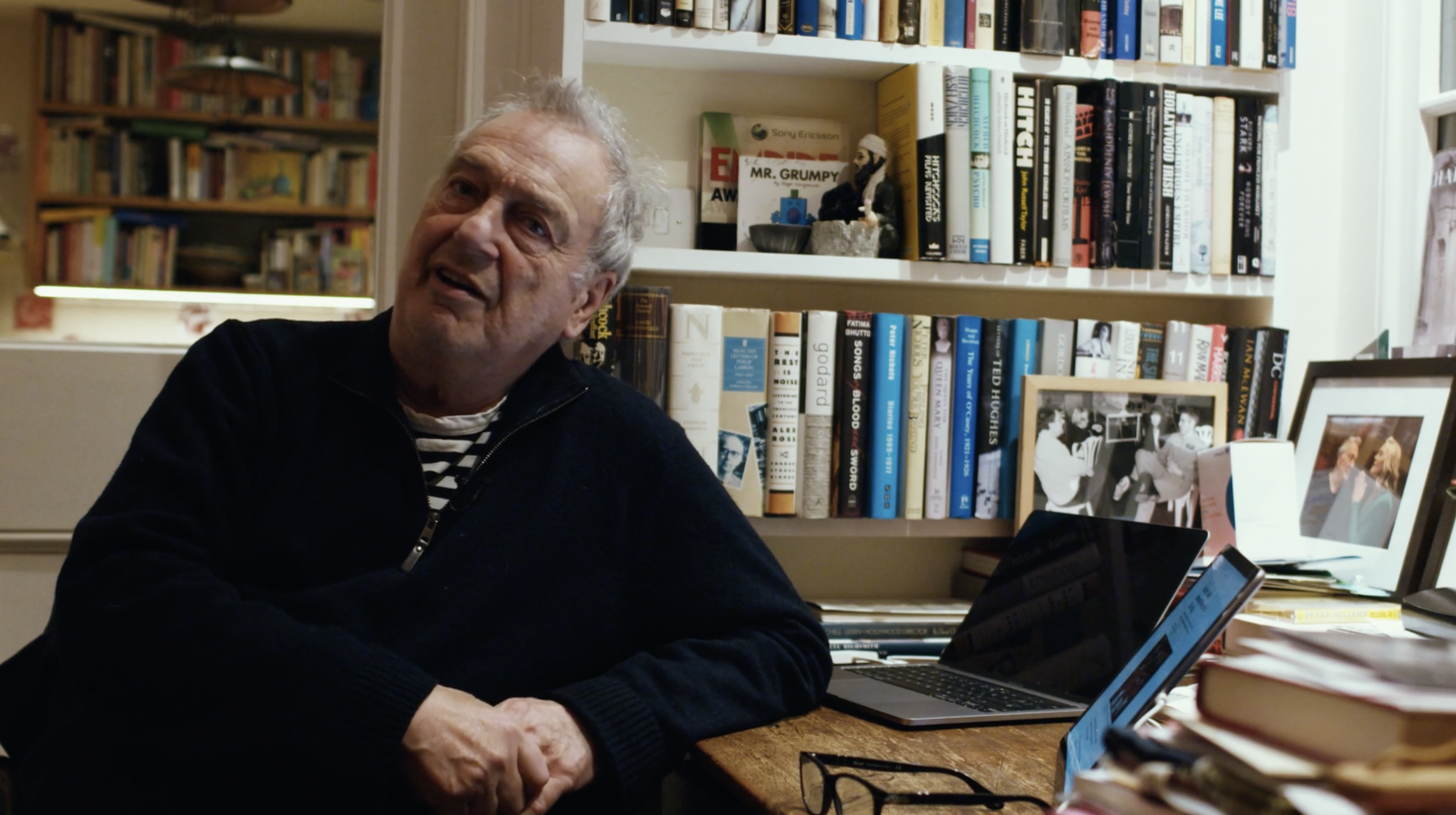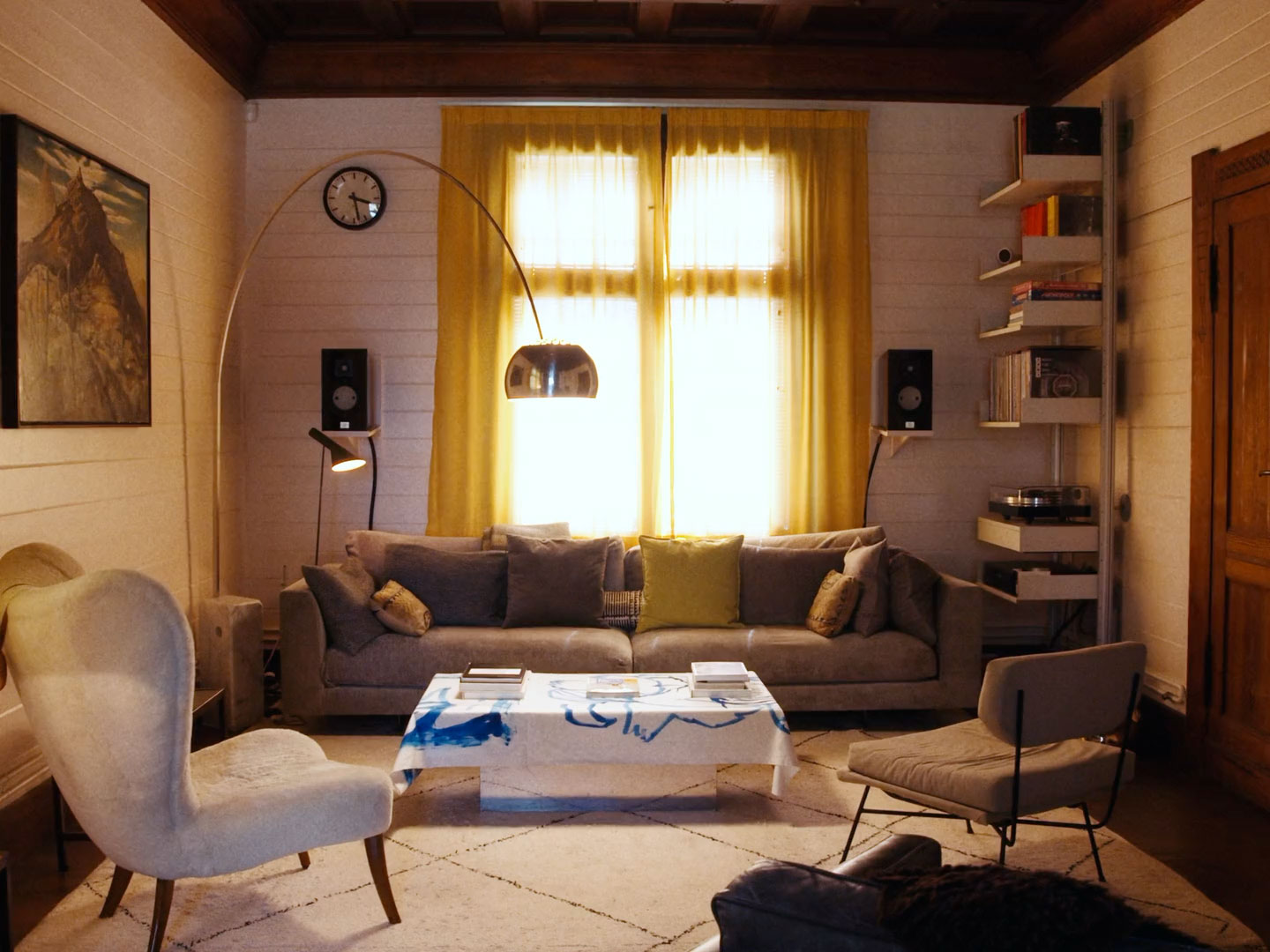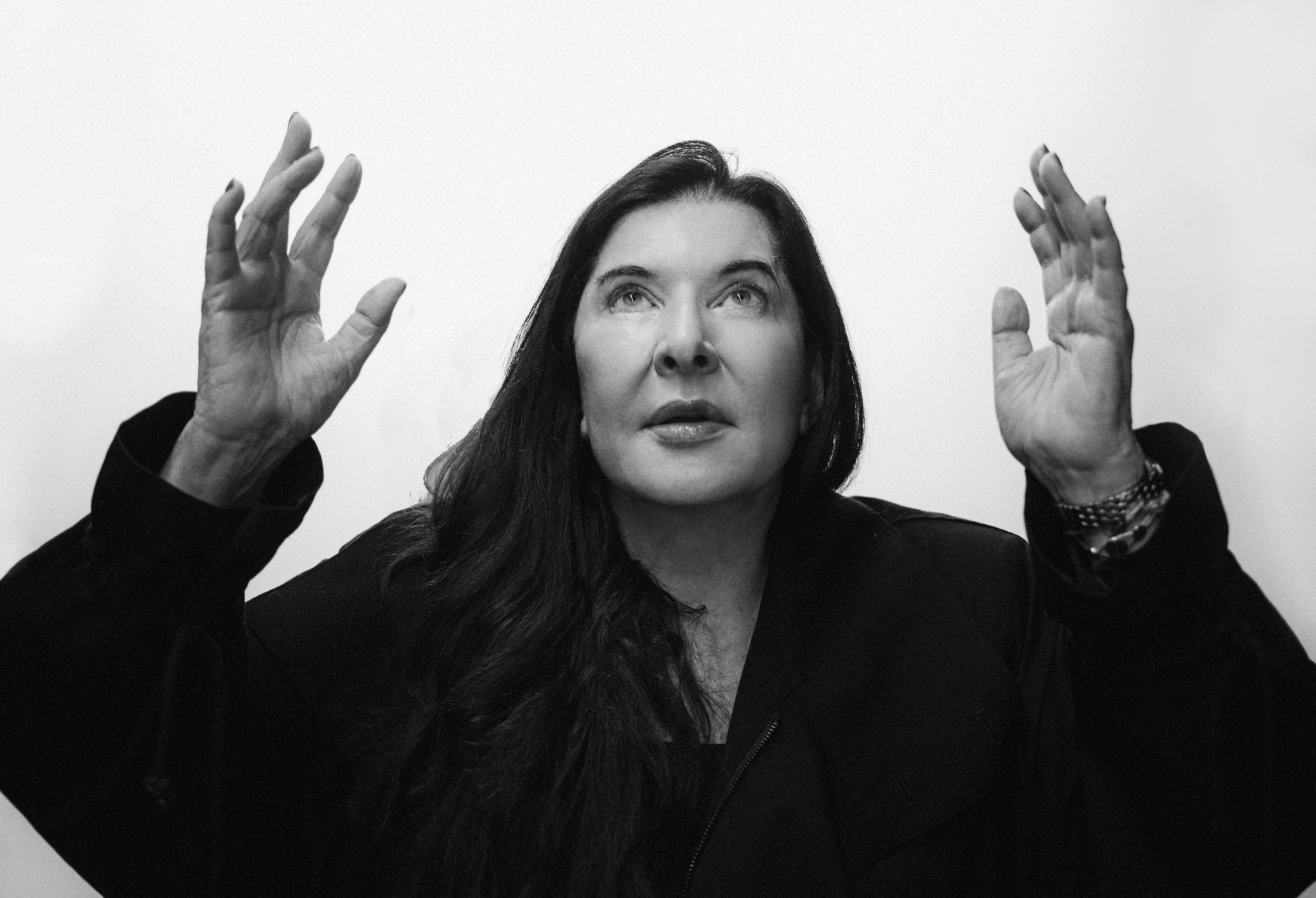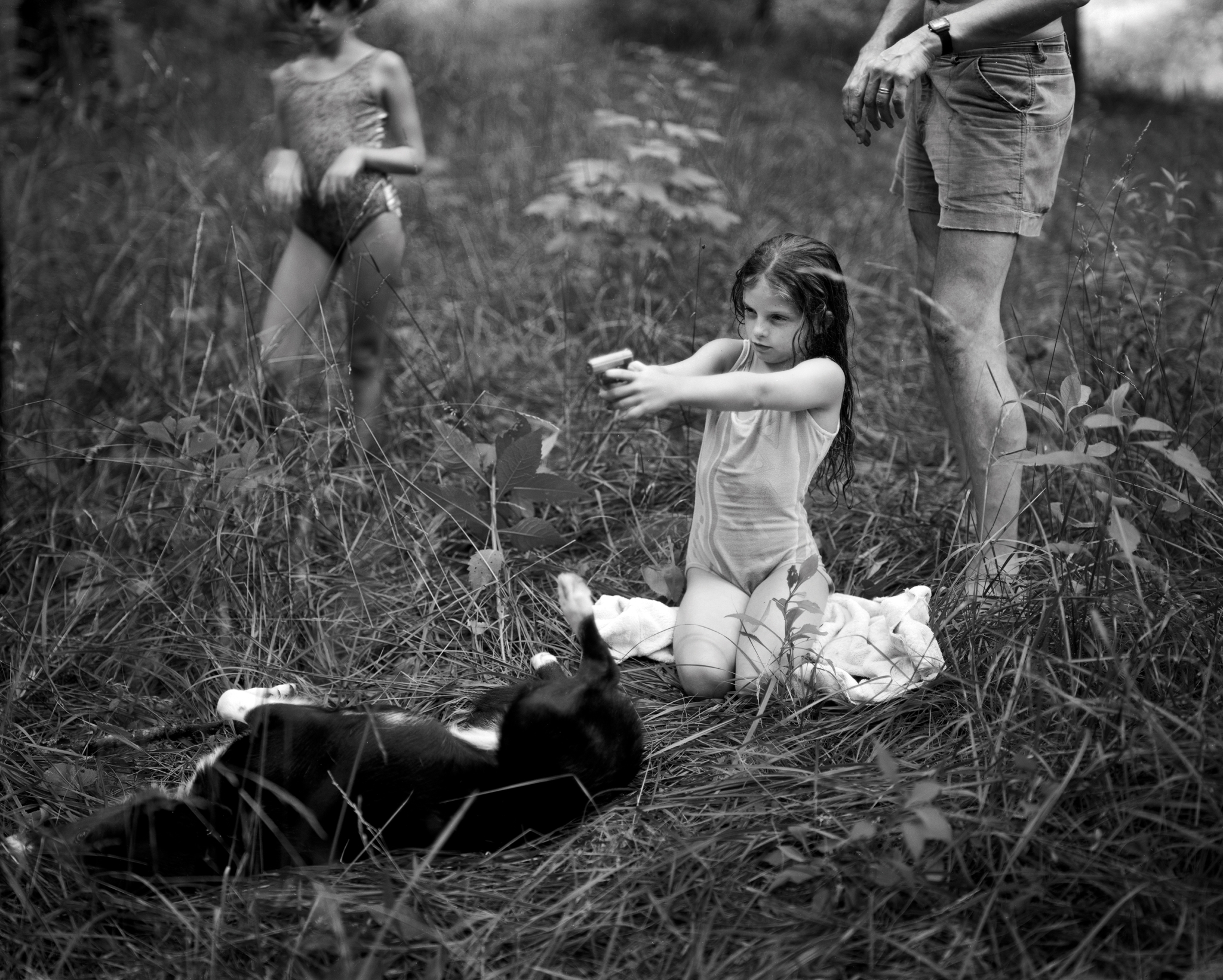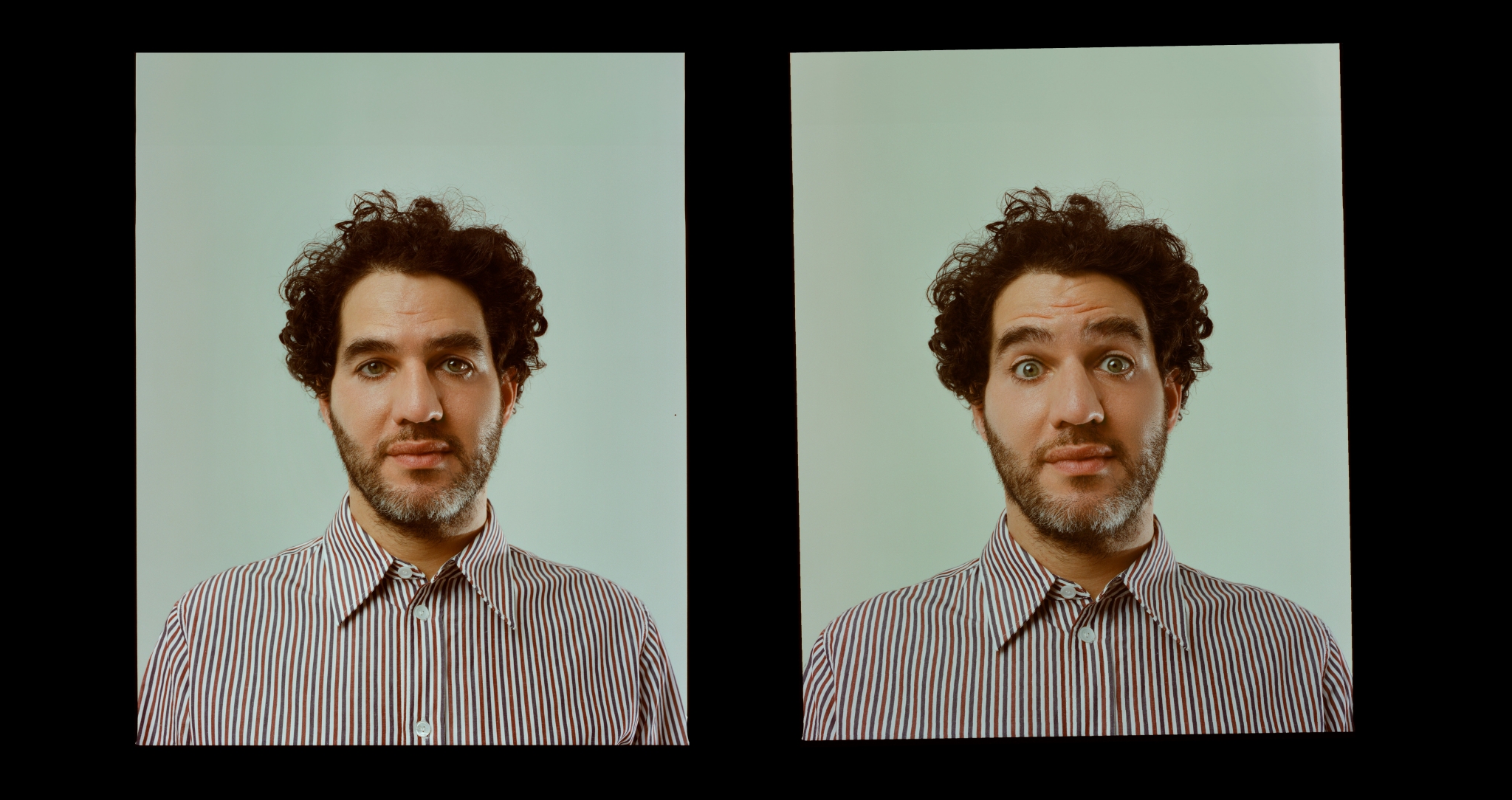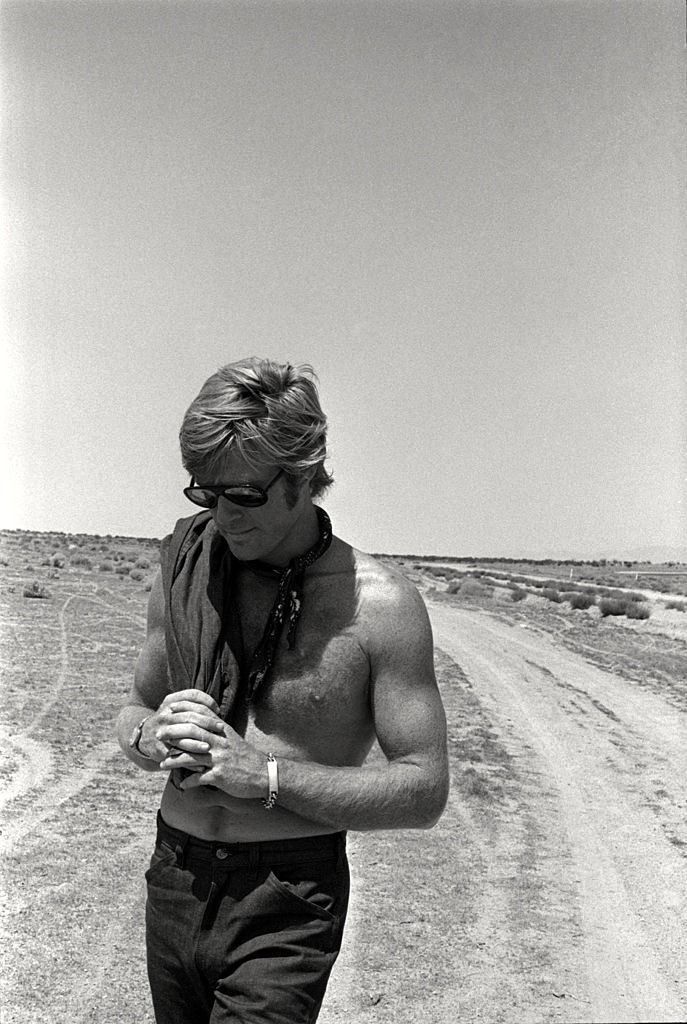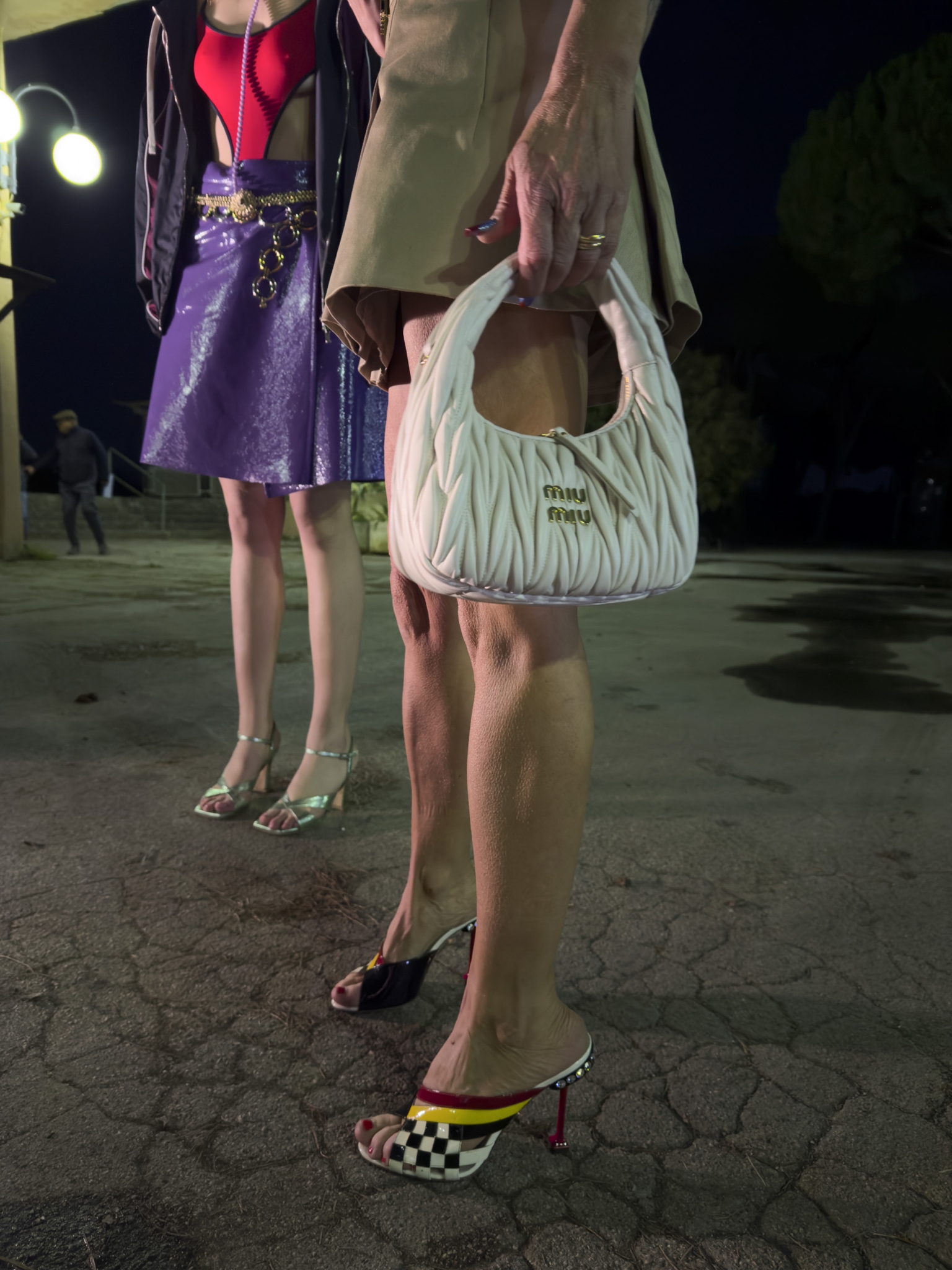
In Autobiografia di una borsetta, the latest instalment in Miu Miu Women’s Tales, Joanna Hogg tells the surprisingly epic story of a Wander handbag.
Whenever I lose something—a sock or a shoe let’s say—I think of a line from the 1998 film adaptation of Ludwig Bemelmans’ Madeleine. Being rushed to hospital after her appendix has exploded, the eponymous schoolgirl realises she doesn’t have her signature chapeau. The other girls rush back to the dormitory to find it. “Think like a hat,” instructs one girl. “I’m a hat, I’m a hat…I’m a hat!” says another, successfully locating the straw boater under Madeleine’s bed.
I thought of this while watching Joanna Hogg’s Autobiografia di una borsetta (Translation: Autobiography of a bag, or ‘little bag’ to be precise). The 29th film in Miu Miu’s Women’s Tales—the fashion brand’s platform for female-led short films—Hogg takes the perspective of a handbag, as it passes through the hands of different owners, refashioning the accessory as a kind of bystander with subjectivity, sentience and even a hint of agency. When approached to participate in the series, Hogg had recently received a copy of a book by her friend, the academic JD Rhodes, The Prop (written with Elena Gorfinkel). “It looks at the role of the prop in the cinema that has never really been done before. The prop as a vehicle for a cinema,” Hogg tells me, from a quiet corner of the Mayfair Townhouse in London.
The only stipulation for the series is that Miu Miu clothes are used. “It’s really free… one pair of Miu Miu shoes would have been enough,” notes Hogg. Yet, without registering the model’s significance to the brand, she was drawn to the white Wander bag to be her protagonist. “It’s got character, it already looks like it’s had a bit of a life with that matelassé leather, and the shape of it, I thought early on I wanted to shoot through the handle. It looked like a bit of an eye or something,” says Hogg. “I also liked the idea of wandering—wandering through your life, a sense of wonder” adds the filmmaker, who describes preparatory trips with the white bag. “I took it around with me. If I saw a particularly nice sunset, I’d go and plonk it on a rock and film through it.”
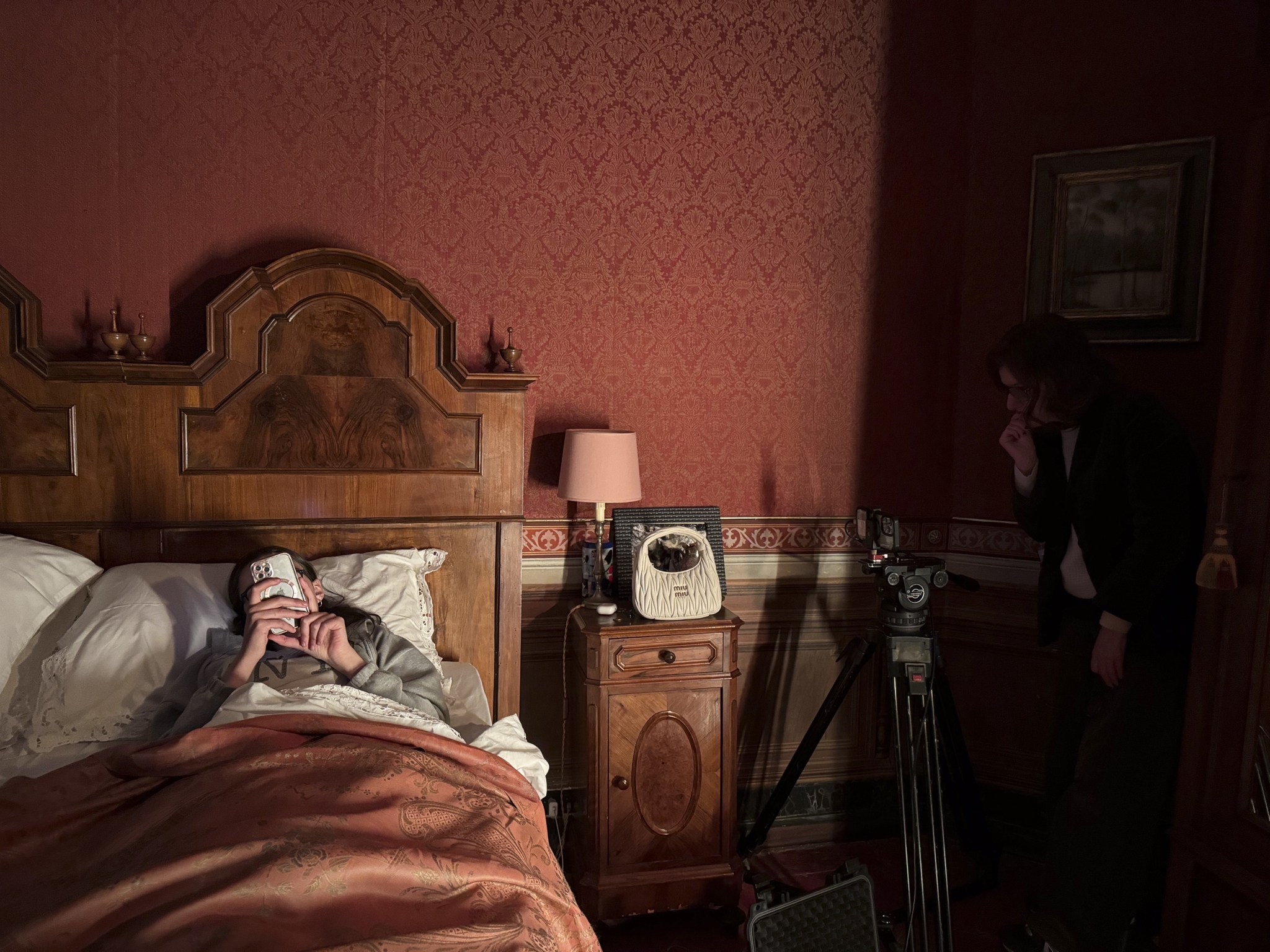
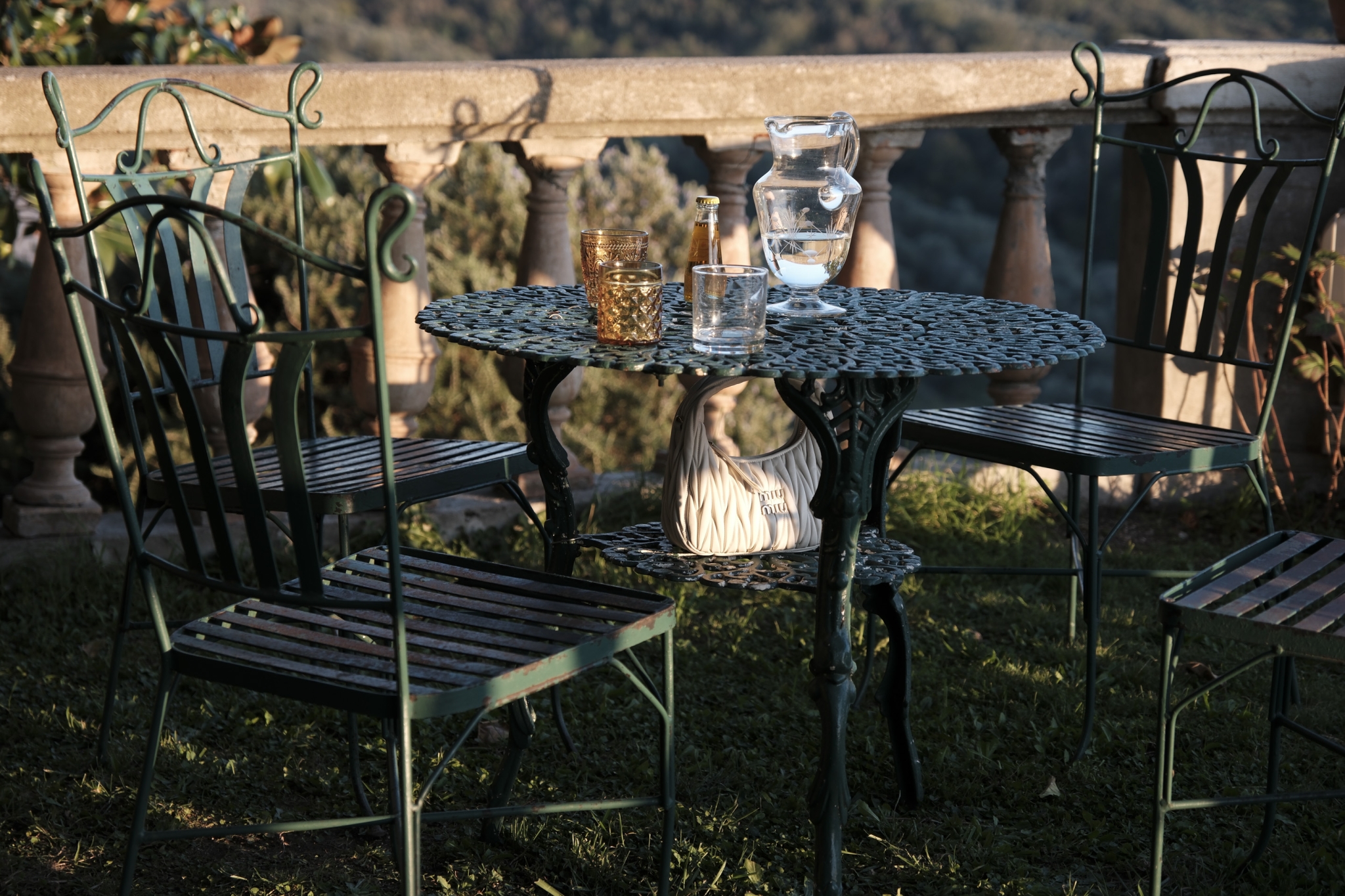
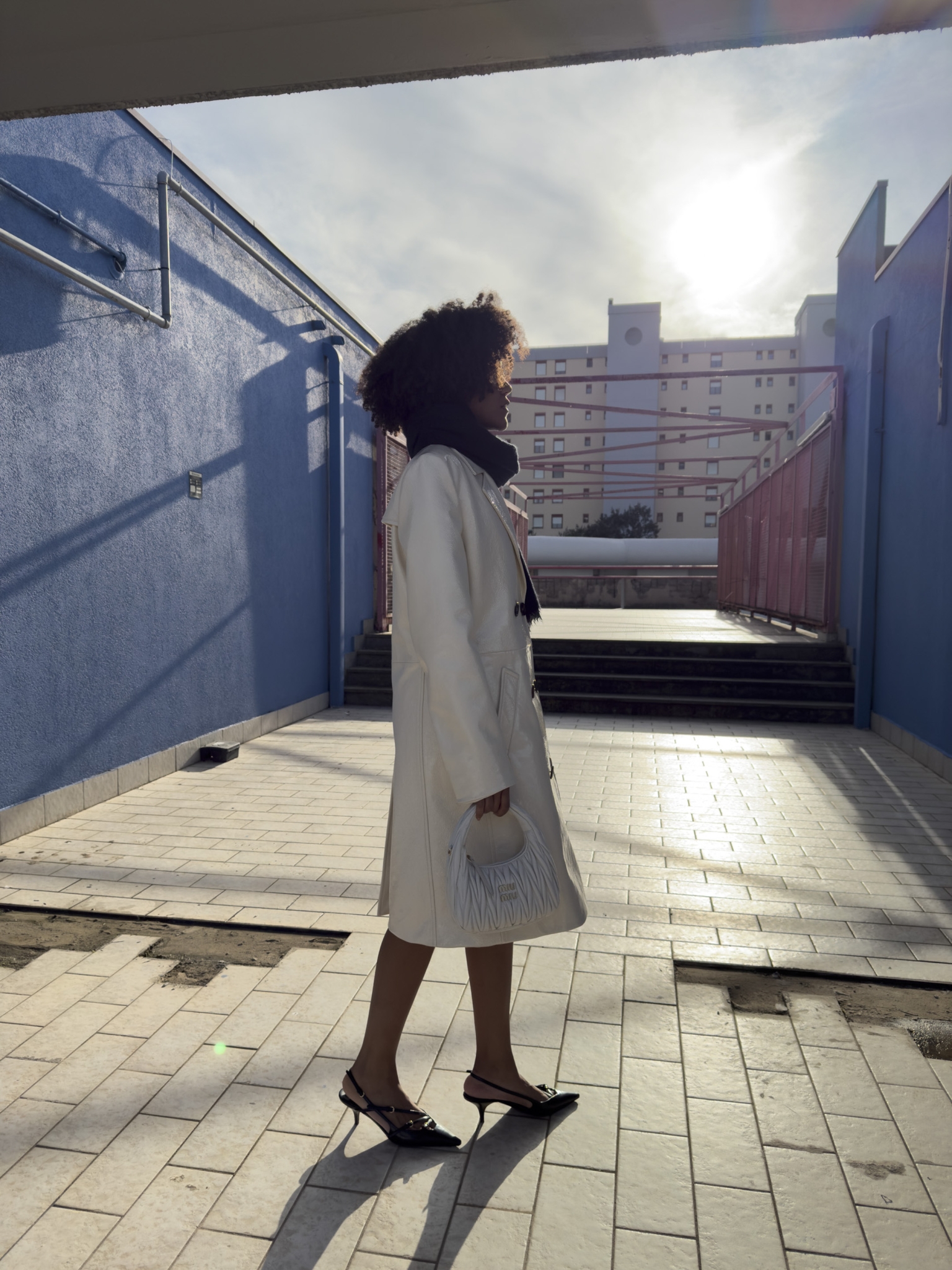
Despite the paucity of its protagonist, there is an epic quality to the storytelling of Autobiografia di una borsetta, with the Wander bag, now in old age, looking back at her life, which she narrates in Italian: “I thought that my life would always be charmed. With the bliss of innocence I thought I would never experience pain or loss in my life.” It is a story of innocence to experience, paradise gained, lost and found again. From the fuzzy sensations of the Prada factory where she is ‘born’ (our little bag repeatedly refers to ‘madre’. “Mrs Prada,” explains Hogg. “She gives everything her blessing,”) Wander arrives in a smart palazzo, as a birthday present for a teenage girl. Yet when her owner meets a boy, she is stolen, bought second-hand by a sad woman in the working class suburbs. Left on a train, the bag finds herself in a lower circle of hell, a seedy crime world where she quite literally becomes an accessory to murder—a bright flash of light against the gold Miu Miu insignia.
The film is a journey through genre, as well as a life. “I was definitely leaning into different styles,” says Hogg. “It was just about the bag having an interesting life and being in contrasting situations.” Whilst the first segment is filled with Hogg’s signature, improvised dialogue, the second section pays homage to the existentially cavernous spaces of Antonioni. “I played my sound designer a moment from Deserto Rosso, of hearing the sound of the shoes on the pavement, just the sort of clip-clop,” says Hogg. The film might alternatively be called ‘Autobiography of a filmmaker’, as Hogg describes subconsciously weaving in moments that have appeared in other films of hers—the money exchanging hands that appears in The Souvenir, where Anthony asks for money from Julie, whilst the same sequence references Exhibition. “The other films were sort of ghosts in the film,” says Hogg.
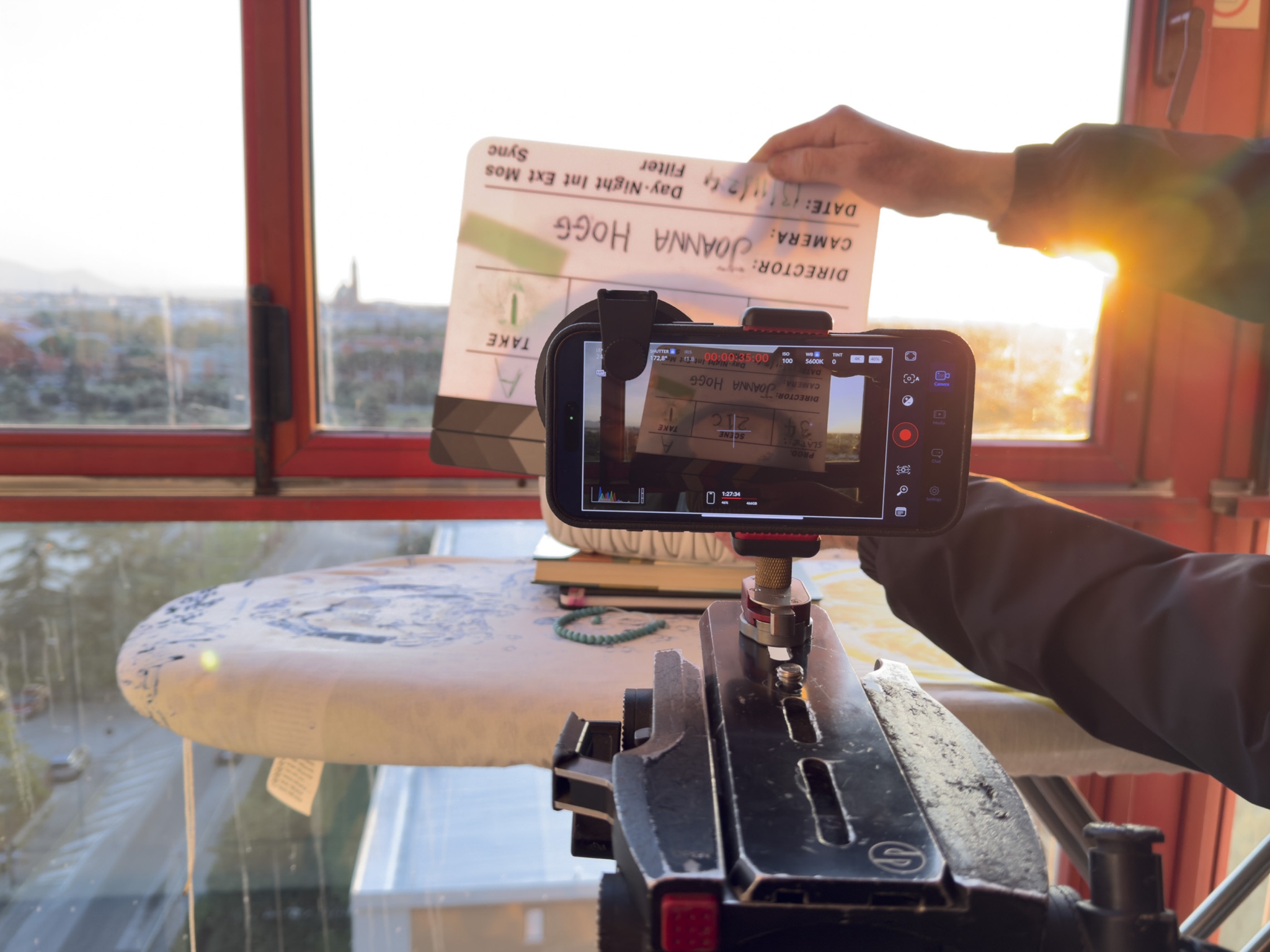
“I’ve kept things from when I was in my 20s—I’m superstitious. Because I use clothes, as in The Souvenir—as props… So I need a prop store in case it comes in useful. Sometimes ideas are formed from that—the history of those objects.”
Joanna Hogg
A love of fashion has haunted the director throughout her career. Her first film, Caprice, made as a student at NFTS and starring a young Tilda Swinton, imagines a young woman fantastically travelling through the pages of her favourite magazine—leaving with a sense of horror after seeing the truth behind the pages. A similar ambivalence lurks in Autobiografia, with the bag’s dawning realisations around the value she really possesses. “I realised I was of great value, but sensed at the same time I was worth nothing at all.” Leaving the bag ultimately bruised and battered, the film even dares to comment on overproduction and the things we no longer need. “I’m full of contradictions really. But it felt very important to have that representation in there,” says Hogg. It is in, however, its end state that the bag finds its greatest sense of value, entering the shelter of hippies who, despite having “no sense of my value, yet I felt close to them and safe.” Hogg herself refuses to throw things away, believing in a more ineffably magic quality of things. “I’ve kept things from when I was in my 20s—I’m superstitious. Because I use clothes, as in The Souvenir—as props,” says Hogg. “So I need a prop store in case it comes in useful. Sometimes ideas are formed from that—the history of those objects.”
Autobiografia di una borsetta will be available to stream on MUBI globally from February 23rd 2025

